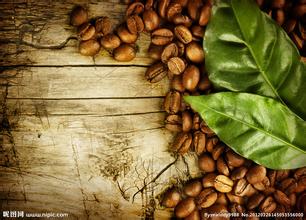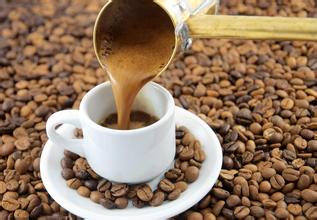Flavor description of Ethiopian Coffee Manor with excellent texture introduction of varieties in producing areas
Growing in the southernmost Ethiopian plateau at an altitude of 4600-7200 feet (Sidamo province), southeast of Jima, just south of the capital, usually sweet, but also loved by most people, its annual output is about 225000bags/60kg, bean body is smaller than Longberry, green with ash, in the Sidamo sun drying field, coffee is placed in hemp net wooden racks, workers take turns in the sun exposure, manual stirring coffee Sun Sidamo is usually marked with G4 exits, while water-washed Sidamo has more G2 exits because of its better sun treatment.
The taste of the sun is close to the smell of flowers, but it is about a little earthy. Water washing has a nutty fruit aroma with a slight cocoa aroma, but what the two pieces have in common is smooth taste and viscosity, comfortable and pleasant acidity and fragrance. Medium roasting is suitable for individual products, deep roasting is suitable for blending coffee and good Espresso substrate grows in Ethiopia's southern western highlands (border between Shewa and Sidmo provinces) east of Jima and north of Sidamo, at elevations of 3600-6200 feet, most Europeans and Americans prefer, its annual output is about 110000bags/60kg, most of the beans are round (15/16scr), the color is green with blue, and the export is mostly G2 grade. The taste is similar to Yegashev, but the viscosity is thin, but the flower and fruit flavor is obvious, the sour taste is softer than Yegashev, the more irritating acidity, the aftertaste is similar to wine, and has a good and balanced quality. it is a noteworthy Ethiopian boutique coffee after Yegashev, but almost all limes are vertically integrated and exported by Ethiopian coffee organizations, so it is almost rare to see them in China.
It is heard that this kind of baking is more suitable for air flow medium baking, not suitable for deep baking, and the better flavor after baking is two to three days. In fact, good Lim is on a par with Yegashev (this is actually a subjective consciousness of opinion). It grows in the southern Ethiopian plateau at an altitude of 5700-7800 feet above sea level, located in the northwest of Sidamo province, and around Lake Abaya. It is usually sweet and more popular. The annual output is about 225000bags/60kg, the bean body is smaller than Longberry, the color is green and gray, and most of them are washed. In the washing plant, the coffee fruit is fermented in the storage tank full of water after harvest, and the workers use a simple wooden rake to stir it to facilitate the smooth cleaning. The washing plant always has a pungent acid fermentation smell and the sound of the fruits in the sink colliding with each other. After the fruit is sticky and soft, it is directly shelled and cleaned, leaving only the fruit covered with sheepskin. After the final washing, the fruit is dried directly outside the washing plant.
A complex with a taste similar to lemon and citrus, with excellent viscosity and complex flavor (I think it is sometimes suspected of being overemphasized and exaggerated because of its loud name, even though I like its flavor). Most of them are exported to G2, suitable for medium baking as a single product.

Important Notice :
前街咖啡 FrontStreet Coffee has moved to new addredd:
FrontStreet Coffee Address: 315,Donghua East Road,GuangZhou
Tel:020 38364473
- Prev

Cocoa aroma of Nicaragua Providence Manor coffee varieties produced fine coffee beans characteristics Introduction
Nicaragua is located in central Central America, bordered by the Pacific Ocean to the west and the Caribbean Sea to the east. North central highlands, coastal plains to the east, is part of the Central American volcanic belt. The eastern plain is hot and rainy, and has a tropical marine climate. Suitable climate provides a good growing environment for coffee cultivation. High quality Nicaragua coffee, grown in the north and centre of the country. Coffee is black.
- Next

An introduction to the characteristics of the flavor description of the citrus-flavored Sidamasha Chiso producing area in Ethiopia
Ethiopia grows coffee in different climatic zones, so it has more than 140 farm varieties, and fresh coffee is produced all the year round. The quality of Ethiopian coffee varies according to different elevations and regional ecological environment. The Harar coffee in the southeast highland is a typical Muha coffee with a strong flavor; the coffee produced in the southwest Wollega has a rich fruity flavor; Limu coffee
Related
- Does Rose Summer choose Blue, Green or Red? Detailed explanation of Rose Summer Coffee plots and Classification in Panamanian Jade Manor
- What is the difference between the origin, producing area, processing plant, cooperative and manor of coffee beans?
- How fine does the espresso powder fit? how to grind the espresso?
- Sca coffee roasting degree color card coffee roasting degree 8 roasting color values what do you mean?
- The practice of lattes: how to make lattes at home
- Introduction to Indonesian Fine Coffee beans-- Java Coffee producing area of Indonesian Arabica Coffee
- How much will the flavor of light and medium roasted rose summer be expressed? What baking level is rose summer suitable for?
- Introduction to the characteristics of washing, sun-drying or wet-planing coffee commonly used in Mantenin, Indonesia
- Price characteristics of Arabica Coffee Bean Starbucks introduction to Manning Coffee Bean Taste producing area Variety Manor
- What is the authentic Yega flavor? What are the flavor characteristics of the really excellent Yejasuffi coffee beans?

